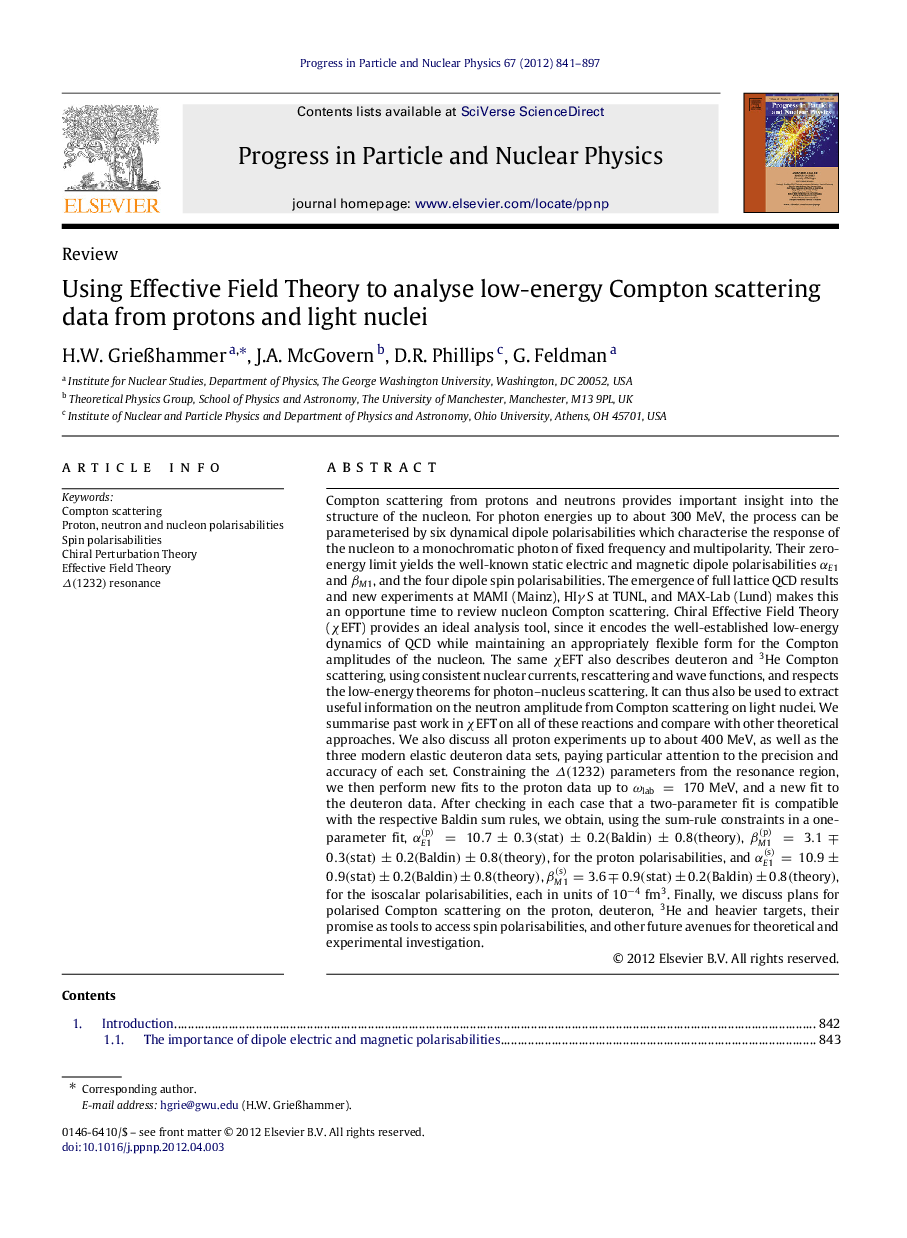| کد مقاله | کد نشریه | سال انتشار | مقاله انگلیسی | نسخه تمام متن |
|---|---|---|---|---|
| 1853993 | 1035669 | 2012 | 57 صفحه PDF | دانلود رایگان |

Compton scattering from protons and neutrons provides important insight into the structure of the nucleon. For photon energies up to about 300 MeV, the process can be parameterised by six dynamical dipole polarisabilities which characterise the response of the nucleon to a monochromatic photon of fixed frequency and multipolarity. Their zero-energy limit yields the well-known static electric and magnetic dipole polarisabilities αE1αE1 and βM1βM1, and the four dipole spin polarisabilities. The emergence of full lattice QCD results and new experiments at MAMI (Mainz), HIγS at TUNL, and MAX-Lab (Lund) makes this an opportune time to review nucleon Compton scattering. Chiral Effective Field Theory (χEFT) provides an ideal analysis tool, since it encodes the well-established low-energy dynamics of QCD while maintaining an appropriately flexible form for the Compton amplitudes of the nucleon. The same χEFT also describes deuteron and 3He Compton scattering, using consistent nuclear currents, rescattering and wave functions, and respects the low-energy theorems for photon–nucleus scattering. It can thus also be used to extract useful information on the neutron amplitude from Compton scattering on light nuclei. We summarise past work in χEFT on all of these reactions and compare with other theoretical approaches. We also discuss all proton experiments up to about 400 MeV, as well as the three modern elastic deuteron data sets, paying particular attention to the precision and accuracy of each set. Constraining the Δ(1232)Δ(1232) parameters from the resonance region, we then perform new fits to the proton data up to ωlab=170MeV, and a new fit to the deuteron data. After checking in each case that a two-parameter fit is compatible with the respective Baldin sum rules, we obtain, using the sum-rule constraints in a one-parameter fit, αE1(p)=10.7±0.3(stat)±0.2(Baldin)±0.8(theory), βM1(p)=3.1∓0.3(stat)±0.2(Baldin)±0.8(theory), for the proton polarisabilities, and αE1(s)=10.9±0.9(stat)±0.2(Baldin)±0.8(theory), βM1(s)=3.6∓0.9(stat)±0.2(Baldin)±0.8(theory), for the isoscalar polarisabilities, each in units of 10−4fm3. Finally, we discuss plans for polarised Compton scattering on the proton, deuteron, 3He and heavier targets, their promise as tools to access spin polarisabilities, and other future avenues for theoretical and experimental investigation.
Journal: Progress in Particle and Nuclear Physics - Volume 67, Issue 4, October 2012, Pages 841–897